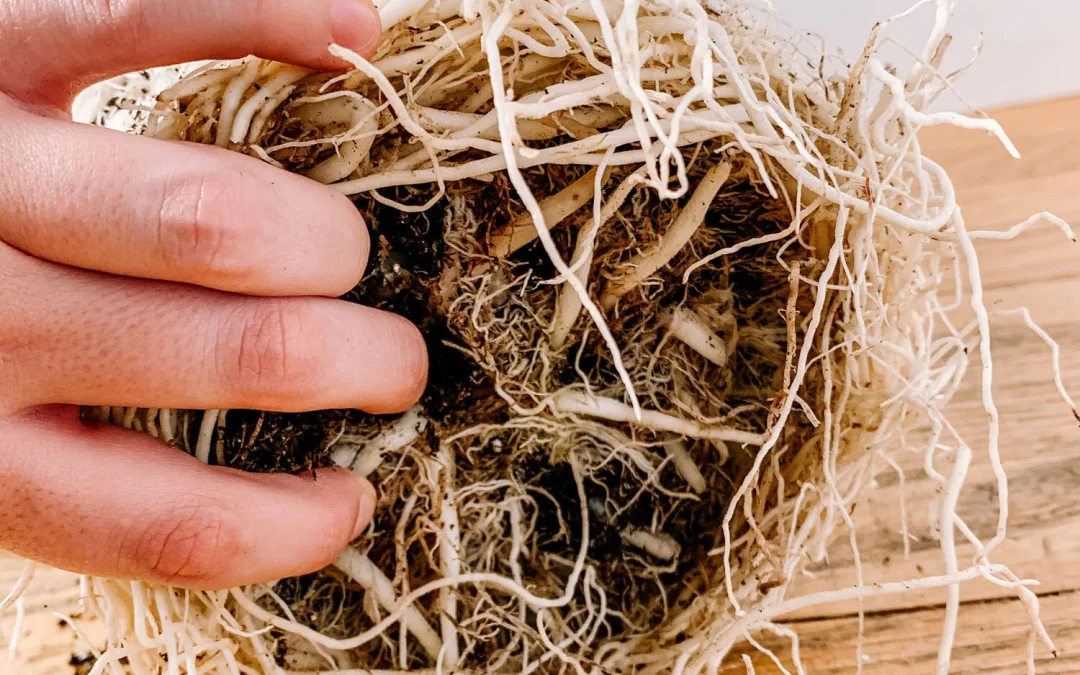Contents
- 1 How to Prevent Root Bound Plants Indoors (Beginner’s Guide)
- 1.1 What Does Root Bound Mean?
- 1.2 Signs Your Plant Is Root Bound
- 1.3 Why Root Bound Plants Struggle
- 1.4 How to Prevent Root Bound Plants Indoors
- 1.5 Best Plants to Watch for Root Bound Issues
- 1.6 Common Mistakes to Avoid
- 1.7 FAQs About Root Bound Plants
- 1.8 Final Thoughts on Preventing Root Bound Plants
- 1.9 Related Articles
How to Prevent Root Bound Plants Indoors (Beginner’s Guide)
If your indoor plants keep struggling despite regular care, the problem may be hidden below the soil. Root bound plants are a common issue indoors, especially when pots are too small or plants grow faster than expected. Preventing roots from becoming tangled and compacted is essential to keep your houseplants healthy, thriving, and long-lived. In this guide, we’ll cover how to spot root bound plants, why it happens, and the best ways to prevent it.
What Does Root Bound Mean?
A plant is considered root bound when its roots grow in circles inside the pot instead of spreading out. This usually happens when:
The plant has outgrown its container.
Roots run out of space and begin wrapping around themselves.
The soil can no longer support enough nutrients and water retention.
Over time, this can choke the plant, reduce growth, and even kill it.
Signs Your Plant Is Root Bound
Look for these warning signs:
Roots growing out of drainage holes.
Soil drying out much faster than usual.
Stunted growth, even with proper care.
Yellowing or dropping leaves.
Visible roots circling the top of the soil.
A clear plant pot set on Amazon can make it easier for beginners to spot root growth early.
Why Root Bound Plants Struggle
When roots are too tightly packed, they can’t absorb water or nutrients effectively. This leads to:
Water stress – Soil dries too quickly.
Nutrient deficiency – Leaves lose color and vitality.
Restricted growth – Plant becomes smaller or leggy.
Higher risk of pests and disease – Weakened roots make plants vulnerable.
How to Prevent Root Bound Plants Indoors
1. Choose the Right Pot Size
Select a pot 1–2 inches larger than the root ball when repotting.
Avoid oversizing, as too much soil can cause waterlogging.
Breathable fabric grow pots on Amazon allow roots to air prune, preventing circling.
2. Repot Regularly
Most houseplants benefit from repotting every 12–18 months.
Fast-growing plants may need it more often.
Gently loosen tangled roots during repotting.
3. Use Quality Soil Mix
Fresh potting soil replenishes nutrients.
Avoid reusing compacted or old soil.
Add perlite or coco coir for better aeration.
4. Prune Roots if Necessary
For very large plants, trim back thick roots before repotting.
Always use clean, sharp pruning shears for roots on Amazon to avoid damage.
5. Rotate Plants and Check Roots
Inspect roots every few months by gently lifting the plant.
Rotate plants into slightly larger containers as they mature.
Best Plants to Watch for Root Bound Issues
Some houseplants are more prone to becoming root bound:
Fiddle Leaf Fig – Fast grower, quickly outgrows pots.
Peace Lily – Roots spread aggressively.
Spider Plant – Sends out shoots and grows rapidly.
Pothos – Adaptable but thrives better with space.
These plants often need annual repotting to stay healthy.
Common Mistakes to Avoid
Repotting too late – Waiting until leaves drop or roots rot.
Using pots with no drainage – Traps water and stresses roots.
Ignoring soil health – Compacted soil suffocates roots.
Skipping inspections – Early checks prevent major problems later.
FAQs About Root Bound Plants
Q: Can root bound plants recover?
A: Yes, with proper repotting and pruning, most plants bounce back.
Q: Should I cut roots when repotting?
A: Only if they are severely tangled or circling tightly.
Q: How often should I check for root bound issues?
A: Every 6–12 months, depending on how fast the plant grows.
Final Thoughts on Preventing Root Bound Plants
Root bound plants are a hidden but common problem in indoor gardening. By choosing the right pot size, refreshing soil regularly, and repotting on time, you can keep your plants strong and healthy. Prevention is always easier than fixing a severely root bound plant, so check your pots often and give your plants the space they need.
For more expert advice on root care and plant health, visit the Royal Horticultural Society’s guide to indoor plant maintenance.

